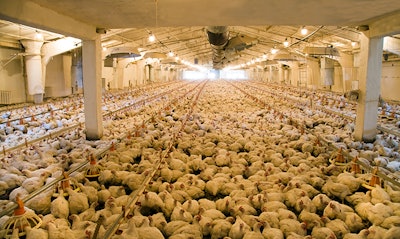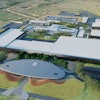
Air exchangers recycle the heat generated by poultry in the house to generate warmth, which could help farmers save on energy costs and reduce air quality challenges.
“One big benefit with heat exchangers is that it’s much easier to maintain proper ventilation during cold periods,” Ben Bloksma, sales director and international sales manager, ITB Climate, explained.
“With this, farmers can maintain the required minimum ventilation for thier animals, creating a better climate, reducing diseases and improving performance.”
A circular system that heats incoming ambient air
The heat generated by laying hens and broilers is often released to the outside via ventilation systems. An air exchanger system changes that.
With this technology, warm air from the poultry shed flows past long, thin plastic tubes called lamellae. This warms the cold incoming ambient air contained within the horizontally aligned lamellae.
Air intake can enter through a duct located on either the side or roof of the poultry house, where it is then spread throughout the entire house by recirculation fans.
The temperature inside the poultry house remains constant with air exchanger technology and remains fresh throughout the day, which helps benefit animal welfare and reduce poultry stress.
Because the system is made entirely of plastic, the surface is corrosion-proof as well as resistant to UV-radiation, acids and aggressive substances in the air.
“There’s always a lot of ammonia produced out of manure. Ammonia in combination with a humidity creates a very aggressive medium and will eat up all kinds of metals,” said Bloksma.
In broiler houses, the technology can be cleaned with a high-pressure hose, although a self-cleaning system is also available for layer facilities.
Addresses poultry house air quality challenges
Air exchangers can also help poultry farms address air quality challenges.
“If there’s not enough ventilation, humidity increases in the house,” he added. “The drier the floor, the less ammonia is produced.”
The technology can help reduce ammonia emissions and fine particulate matter emissions by up to 70% and 50%, respectively.
“Here in the Netherlands, we have a saying that the knife cuts on both sides,” Bloksma said. With this technology, “there is a benefit on all kinds of sides.”


















